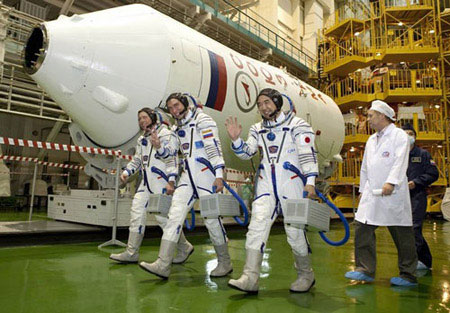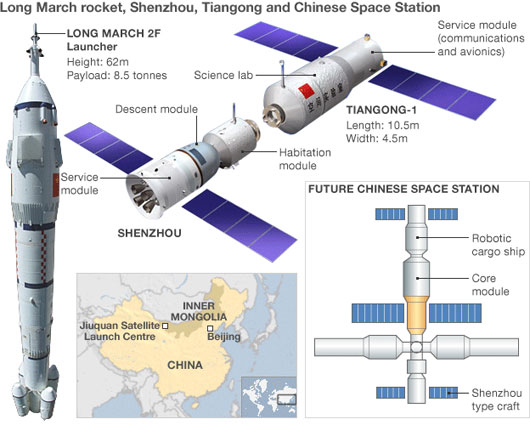China is about to
Analysts say that with China's ability to seize technology quickly and the speed of investment in the aerospace sector over the past few years, the country will soon surpass' the teacher. ' Russia.
According to public figures in 2011, China reached a 3-billion-dollar export of high-tech goods, including aerospace technology. Meanwhile Russia only has 1.1 billion USD.

Russian crew preparing to fly on Soyuz spacecraft
Along with increasing exports of high-tech goods, China also boosted investment in research and development of aerospace technology. Statistics in 2012 showed that China accounted for 14.2% of the total investment budget for all research and development grants in the world, second only to the United States and the nation accounting for 31.1% and the other countries. Europe accounted for 24.1% but exceeded Russia with only 1.9%.
The policy of promoting investment in research is gradually bringing China from the position of an 'assembly line' into an outpost to develop and manufacture high-tech products globally. This makes some neighboring countries, especially Japan, 'worried' about the increasing migration of scientists to China.
Moreover, in recent years, from 2007-2012, the number of satellites launched into Earth orbit in recent years of China has been at the forefront of the world. Last year, China had eight remote sensing satellites launched out of 24 satellites of 13 different organizations and countries around the world. Meanwhile, Russia only has three 'satellites'.

Diagram of Thien Cung space station of China
Not only is there a lot of quantity, the advanced technology in manned spacecraft design is also the point that China is showing 'no less' than Russia. Typically, the Shenzhou spacecraft, though based on the Soviet Soyuz, has been fundamentally improved to the point that Chinese people can "boast" their own manned spacecraft.
In particular, Shenzhou can also unload a module in orbit when an astronaut leaves the station to Earth, while other astronauts remain in the working space in the modules. another as an automated laboratory. Shenzhou's remarkable difference in comparison with Russian spacecraft is that it has a much higher power ratio than the weight ratio.
So far, Chinese space programs have the same quality as Russia. Although the number is still inferior, but with the ambition to become a world leader in the field of space and current science-technology policy will soon help China narrow the gap and soon will "overcome" the face of the teacher ' Russia.
- 16 interesting things you may not know about China
- This year, China launched Shenzhou VII
- Astronomy is as big as 30 football fields in China
- Yahoo China will be reformed to serve businesses
- First 3D print car in China
- China plans to send people to the Moon
- China - America cooperates to research and exploit ice in the East Sea
- China: Spending two billion yuan of bird flu
- Russia and China cooperated to explore Mars
- Pollution in China spread to the US - Why?
- The most populous area in China may not survive because of the scary phenomenon
- Earthquakes continuously shook northeast China
 Van Allen's belt and evidence that the Apollo 11 mission to the Moon was myth
Van Allen's belt and evidence that the Apollo 11 mission to the Moon was myth The levels of civilization in the universe (Kardashev scale)
The levels of civilization in the universe (Kardashev scale) Today Mars, the sun and the Earth are aligned
Today Mars, the sun and the Earth are aligned The Amazon owner announced a secret plan to build a space base for thousands of people
The Amazon owner announced a secret plan to build a space base for thousands of people